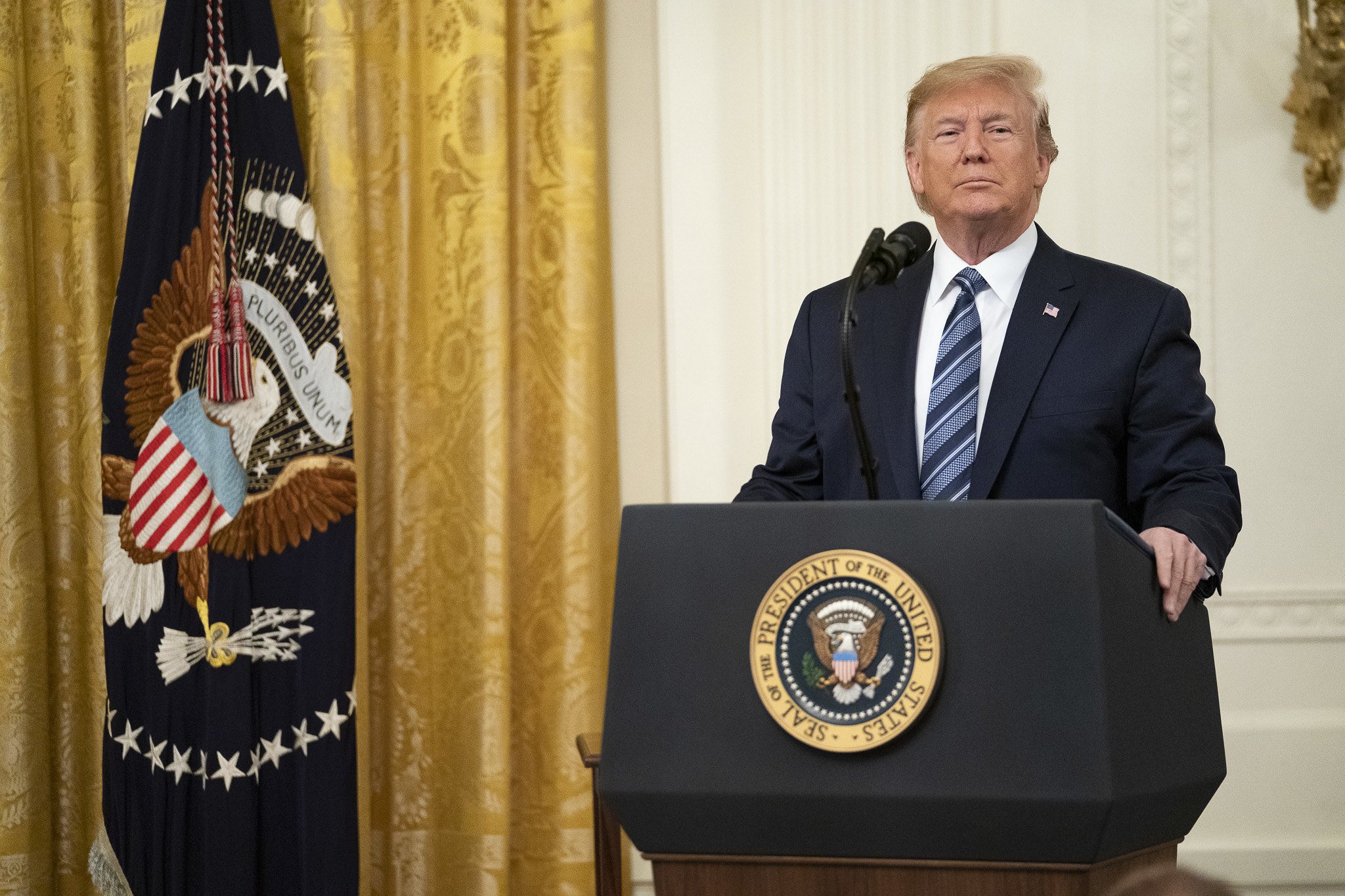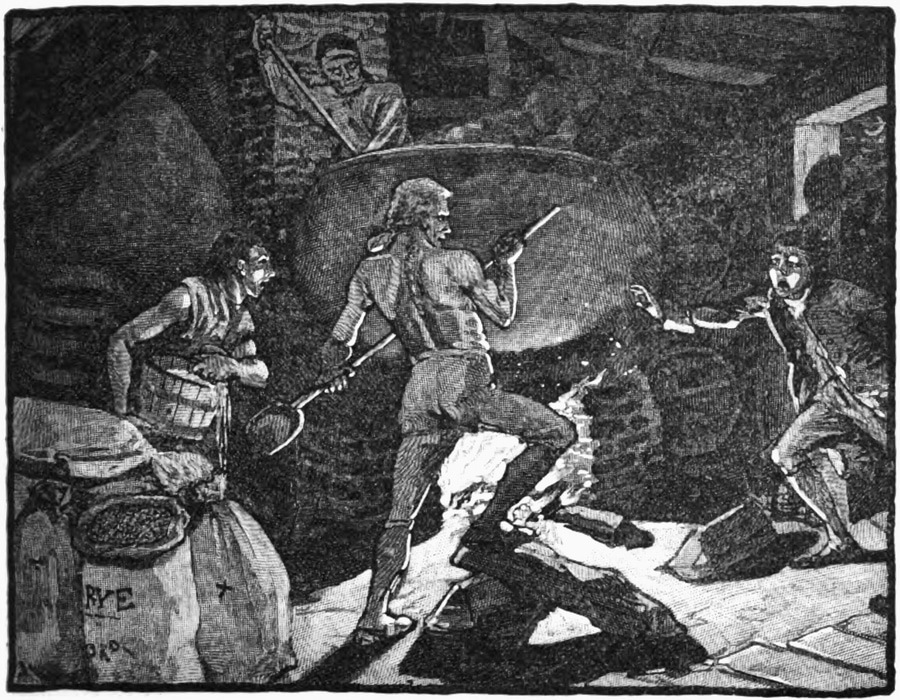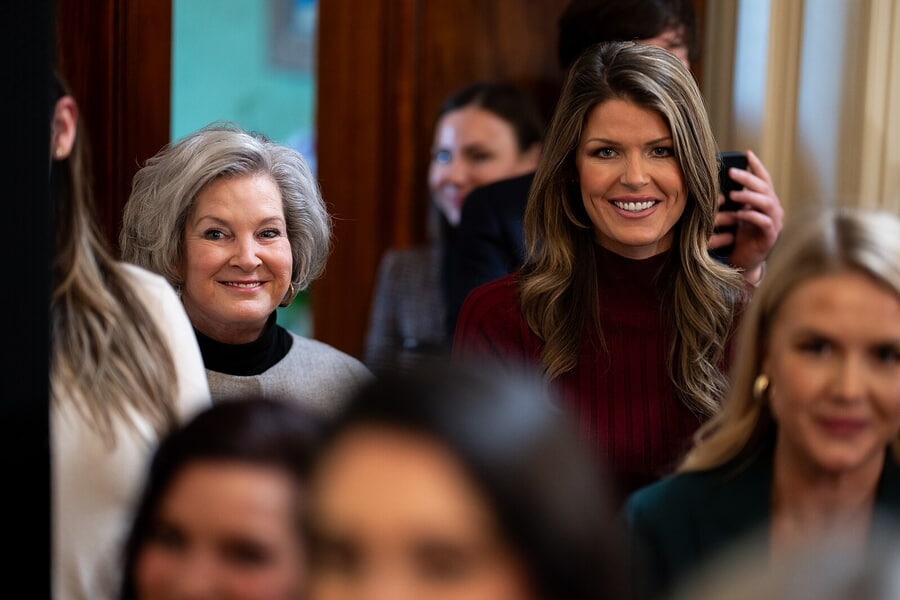Trump, Presidential Immunity, and the King’s Two Bodies
Trump’s motion to dismiss the Jan. 6 indictment is the latest expression of a long-running struggle over the nature of the presidency.

Published by The Lawfare Institute
in Cooperation With

When Donald Trump filed a motion to dismiss the federal charges against him over Jan. 6, it wasn’t a surprise. As early as August, Trump’s attorney John Lauro announced in court that Trump’s legal team was planning to file a “very, very unique and extensive motion dealing with executive immunity,” making the case that Special Counsel Jack Smith is “essentially indict[ing] a president for being president.” Now, two months later, that motion is finally here.
Whether or not the filing is “very, very unique,” as Lauro promised, is a question best left to the reader. But it closely tracks what Lauro previewed that day in court, arguing that the indictment brought by Special Counsel Jack Smith should be tossed out because it seeks to impermissibly hold Trump criminally responsible for actions at the center of his presidential authority. In fact, it tracks Lauro’s arguments so closely that, in September, my Lawfare colleagues Saraphin Dhanani and Benjamin Wittes were able to preemptively evaluate some of the arguments that would go on to appear in the motion.
So it’s been clear for months that Trump would be taking this step. Yet this court filing has been in the works since long before Lauro’s comments in August. It’s been brewing since before the grand jury handed up Trump’s indictment on Aug. 1, and maybe even before the violence of Jan. 6 itself. Trump’s motion to dismiss is the latest expression—and perhaps the clearest—of a legal and conceptual struggle over the nature of the presidency that’s been taking place since Trump first swore the oath of office on Jan. 20, 2017.
Over the course of his time in office, Trump complicated typical understandings of the division between the office of the presidency and the person of the president himself, often seeking to collapse the two concepts in order to leverage his office for personal gain. Judges, Justice Department lawyers, and two different special counsels were forced to ask: Given Trump’s consistent and abusive use of the presidency for personal aims, to what extent could he claim the benefits and the protections of the office? Now, with the filing of the motion to dismiss, the courts will have to evaluate this question in light of Trump’s least presidential act of all—his effort to seize power on Jan. 6, despite having lost an election, by leveraging the power of a mob against a coordinate branch of government.
As Dhanani and Wittes noted in their early overview of what the motion to dismiss might hold, the argument that former presidents enjoy some level of criminal immunity for conduct that took place during their time in office follows, to some extent, from existing doctrine. But it has never been addressed publicly by the Justice Department or by any court—because, before Trump, neither branch of government had ever had reason to address it. The motion to dismiss, therefore, necessarily breaks new ground.
In Nixon v. Fitzgerald, the Supreme Court held that presidents—including former presidents—have absolute immunity from civil liability “for acts within the ‘outer perimeter’” of presidential power. The motion to dismiss seeks to expand Fitzgerald from the civil to the criminal context, arguing that “Fitzgerald’s reasoning … entails that Presidential immunity include immunity from both civil suit and criminal prosecution.” Trump’s legal team then writes that the actions for which Trump faces criminal charges in relation to Jan. 6 are within that “outer perimeter” of the president’s “official responsibilities” under Fitzgerald. Key to this argument is the insistence that the law forbids inquiry into presidential motives for the purpose of evaluating whether or not an action is located within that perimeter. What’s more, according to the motion to dismiss, Trump’s legal team writes, the mere allegation “that immune acts were part of a conspiracy”—or were otherwise unlawful—“does not defeat immunity.”
As Lauro promised, the motion to dismiss is indeed “extensive,” and I won’t attempt to fully evaluate its reasoning here. Rather, my focus is on how this expansive vision of presidential immunity is situated within the broader scope of thinking about the nature of the presidency, particularly the presidency under Trump. And to understand this, we need to look back further into the past—to medieval England, to be precise.
The historian Ernst Kantorowicz famously described medieval monarchs as conceptualized as having “two bodies.” There is the “body natural”—the particular person wearing the crown at any given point. And there is the “body politic”—the institutional authority of the monarchy, which persists unbroken across the lifespans of those individual kings. This idea of the duality of the executive, the distinction between office and officeholder, is a useful lens through which to understand the nature of the presidency. Daphna Renan has traced how this duality manifests throughout American history and law, though usually not in so many words.
Consider the question of presidential immunity as expressed in Fitzgerald. By establishing that there exists some “outer perimeter” past which a president’s actions are not within the scope of his official duties, Fitzgerald acknowledged the distinction between the official and the unofficial, the office and the man. In Clinton v. Jones, the Court would go on to make explicit that absolute immunity does not “extend[] beyond the scope of any action taken in an official capacity” to include “the unofficial conduct of the individual who happens to be the President.” The office, in other words, doesn’t entirely subsume the man, who remains responsible for his personal conduct as distinct from institutional authority.
As Fitzgerald and Jones demonstrate, the conceptual tangle of the president’s “two bodies” long predates the Trump presidency. Still, though, Trump’s particular crassness and willingness to abuse presidential power—what Wittes and I have described elsewhere as his characterological inability to honor his oath of office—revealed that disjunction between man and office particularly sharply. Consider, for example, his Twitter account: Were tweets sent by @realDonaldTrump, rather than the official White House @POTUS account, presidential statements, or were they just the dyspeptic rantings of a bored Fox News viewer? During the Trump administration, Justice Department lawyers repeatedly struggled with this question when asked by judges what bearing @realDonaldTrump tweets had on their legal arguments.
In some instances, Trump’s actions while occupying the presidency seemed to pull the two bodies further apart. Defending the constitutionality of the successive travel bans imposed over the course of Trump’s first years in office, his administration successfully argued that his tweets and campaign-trail comments promoting a ban on Muslim travelers entering the country shouldn’t shape the Supreme Court’s understanding of the issue. That case, Hawaii v. Trump, cleaved the noxious statements of Trump the man from the actions of Trump the president: As Chief Justice John Roberts wrote for the majority, “[W]e must consider not only the statements of a particular President, but also the authority of the Presidency itself.”
In other instances, though, Trump did his best to collapse the distinction between the two bodies. He both leveraged the power of the presidency for personal gain and sought to employ its authority to shield him from inquiries regarding his personal affairs. He pushed for the Justice Department to go after his political opponents. With mixed success, he fought efforts by both Congress and the Manhattan district attorney’s office to obtain his personal financial records, arguing in Trump v. Mazars and Trump v. Vance that his position as president should preclude such investigations.
Trump’s efforts to undermine the results of the 2020 election represented the most dramatic manifestation yet of this effort to merge the two bodies into one—an attempt to leverage the authority of the executive branch for personal ends, to prevent the power of the presidency from being passed on to another occupant. At the same time, though, Trump’s actions emphasized the deep gulf between the man and the presidency. Rep. Liz Cheney, vice chair of the House Jan. 6 committee, would later describe him as “unfit for any office.”
In arguing that Trump is immune from criminal prosecution for these actions, the motion to dismiss continues his effort to collapse the two bodies, this time in order to protect the man from legal accountability. Trump’s legal team frames his actions in the run-up to Jan. 6 as “not just ‘within the outer perimeter,’ but at the heart of his official responsibilities as president”—describing what the special counsel’s office frames as a criminal conspiracy as instead appropriately presidential “efforts to ensure election integrity.” The position that the prosecution can’t inquire into Trump’s motives does a great deal of work here, by taking off the table some of the more damning evidence about his desire to illegitimately hold onto power.
This argument may be a stretch, but it’s a serious one that Special Counsel Jack Smith will have to grapple with. At times, though, the motion to dismiss seems to creep close to the idea that practically anything the president does will be within the outer perimeter, so long as it’s in some way related to “a federal government function,” because it’s the president doing it. “Given the all-consuming nature of the presidency,” the motion argues, simply the fact that “every action of the Defendant charged in the indictment occurred while he was still in office as President” indicates that “the indictment is based solely on President Trump’s official acts.” This would be a near-total collapse of the two bodies—something quite close to Richard Nixon’s famous statement that “when the president does it, that means it is not illegal.”
Elsewhere, the motion acknowledges the duality of the two bodies but refuses to pull them entirely apart, describing the “dual roles” of “official and personal character” that make up the presidency. In this view, the fact that “official responsibilities” may have “personal ramifications” (such as a personal desire to hold on to power, for example) doesn’t necessarily place a given action outside the scope of Fitzgerald immunity. Quoting the Supreme Court, the motion states, “[T]here is not always a clear line between [the president’s] personal and official affairs.” That quote is taken from Mazars, where the Court held that a congressional investigation of the president’s personal finances nevertheless implicates the separation of powers—a statement that, as Renan puts it, “the two bodies are inextricable.”
The citation to Mazars is only one of many references in the motion to dismiss to Trump-era squabbles over the two bodies, a kind of greatest hits tour of recent litigation on the subject. The motion draws on Knight First Amendment Institute v. Trump, a case concerning whether Trump’s decision to block Americans from reading his @realDonaldTrump account implicated First Amendment concerns, to argue that Trump’s tweets about election fraud should be considered presidential statements. It cites Hawaii v. Trump on the rhetorical power of the presidency. It also points to Justice Samuel Alito’s dissent in Trump v. Vance, drawing on Alito’s objection to the Court’s ruling that Trump’s status as president could not shield him entirely from state criminal investigation—in other words, that the two bodies can’t be collapsed and turned into a shield against all criminal process.
“There is no question that a criminal prosecution holds far greater potential for distracting a President and diminishing his ability to carry out his responsibilities than does the average civil suit,” the motion quotes Alito as writing. But this is a bit mischievous. While Alito did indeed write those words, he was talking about a criminal prosecution of a president while in office—not about the prosecution of a former president. In this respect, perhaps, Trump is collapsing the two bodies in time as well, claiming the institutional presidency as a mantle of protection for himself even after having unwillingly departed office.
Also somewhat mischievous are Trump’s repeated citations to the Justice Department’s amicus brief in Blassingame v. Trump, a civil lawsuit against Trump and others over the events of Jan. 6. U.S. District Court Amit Mehta ruled in February 2022 that Fitzgerald immunity did not shield Trump from litigation on the matter—holding that Trump’s actions were “unofficial acts,” which “entirely concern[ed] his efforts to remain in office for a second term.” Trump appealed, and the U.S. Court of Appeals for the District of Columbia requested the Justice Department’s view on the matter. (The case is still pending before the D.C. Circuit.)
If you were to read only the characterization of the Justice Department’s brief set out in the motion to dismiss, you would come away with the sense that the department takes a sufficiently expansive view of presidential immunity to protect Trump. “That immunity reaches all of the President’s conduct within the vast ambit of his Office, including its ‘innumerable’ constitutional, statutory, and historical dimensions,” Trump quotes the department as writing. What he doesn’t quote, though, is the Justice Department’s assertion that “a meaningful perimeter exists” between official and nonofficial action—and that “incitement to imminent private violence,” which the Blassingame plaintiffs allege that Trump engaged in on Jan. 6, would lie outside that perimeter. The department’s brief argues for a broader conception of presidential immunity than the plaintiffs—and it takes pains to underline just how broad that conception really is—but ultimately suggests that such behavior would be outside it.
For the special counsel to have brought this indictment in the first place, the Justice Department must have found that the indicted conduct lies outside of whatever level of presidential immunity it acknowledges. The special counsel’s brief on this motion is due shortly, and it will obviously oppose the sweeping conception of immunity that Trump is asserting.
Interestingly, the department’s Blassingame brief explicitly doesn’t attempt to locate exactly where the outer perimeter stands, arguing instead that the conduct at issue is simply so far outside the bounds of presidential action that this isn’t a close call. This is one way of dealing with the mismatch that Trump created between the two bodies: defining his behavior as so aberrant, so tied to his particular and unique body natural, that this behavior no longer implicates the august body politic. Special Counsel Robert Mueller made a similar move in his final report, albeit in a different doctrinal context separate from Fitzgerald. Mueller argued that applying the obstruction statutes to presidential conduct authorized by Article II wouldn’t unduly constrain the actions of future presidents, because “virtually everything the President does in the routine conduct of office will have a clear governmental purpose and will not be contrary to his official duty.” In this way, the two bodies are severed.
The Justice Department’s Blassingame brief doesn’t translate neatly into the context of United States v. Donald J. Trump. Blassingame is a civil case where Fitzgerald unquestionably applies, and the department’s reasoning in its amicus brief is closely tied to the question of whether Trump’s actions on Jan. 6 met the legal standard for incitement, which isn’t at issue in the criminal prosecution.
As Dhanani and Wittes point out, the special counsel’s office will also have to address a tranche of Justice Department Office of Legal Counsel memos that Mueller also grappled with, which seemingly limit the applicability of the relevant criminal laws to presidential conduct if so doing would “arguably limit the president’s constitutional role.” Those memos aren’t binding on the courts, but they are on Smith. Just how the special counsel’s office might address this issue is complicated, but in the end, in some form or another, it may well come down to that same argumentative structure: There is something about Trump’s actions here—in this instance, his efforts to seize power and overturn a democratic election—that is simply not what a president can be permitted to do.
Trump’s antics have repeatedly forced courts to struggle with how to define the border between president and presidency. The unsatisfying and sometimes contradictory nature of judicial rulings on the subject reflects both the fundamental conceptual tangle of the two bodies and the particular complexity represented by Trump. The mismatch between man and office is instinctively apparent, and yet the task of drawing a clear and conceptually defensible line between them—one that goes beyond the gut response of what FBI Director James Comey, in describing his reaction to Trump, termed “the nature of the person”—has proved elusive. Now, in responding to Trump’s motion to dismiss, Judge Tanya Chutkan, who is presiding in the first instance over Trump’s prosecution, and the appellate courts above her will get another chance to draw that line.


.jpg?sfvrsn=8253205e_5)


